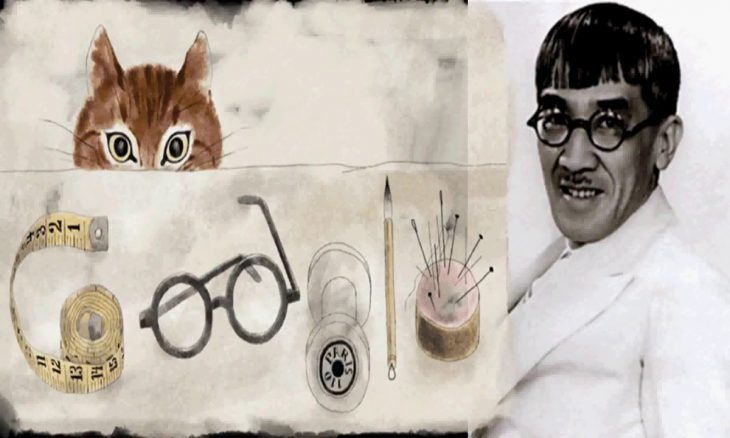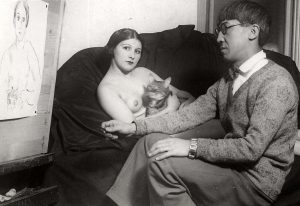
Tsuguharu Fujita or Leonard Foujita, was born in 1886 in Tokyo, Japan. He studied at the School of Fine Arts in Tokyo from 1905-1908 and arrived in Europe in 1913. He would move to Paris two years later. He has a family name in France.
Foujita paints street scenes in Paris and suburbs. He exhibited in various Paris galleries (Salon d’automne, Salon des Independants). Little by little artists achieve a synthesis between oriental calligraphy and western art. During the 20s, he developed a technique using smooth and bright ivory paint, where clean line trails developed with bright contours. Foujita composes his workshop series, still alive, self-portrait, and cat; he will also paint portraits of mondane, as well as a number of religious paintings with golden backgrounds.
In the 30s, Foujita will divide her time between Paris and Tokyo. He will paint several murals. He returned to his home country in 1940 and would work, during the war, as an artistic attache and official painter of the Army ministry. He will serve his country in his art, paint scenes of war or glorify the victory of Japanese soldiers. Foujita will know the period of purgatory in Europe in the years immediately after the war.
He visited New York in 1949, then returned to live in Paris the following year. His style will change, gathering new lines and details (Fables of La Fontaine, photos of children, countryside, and views of Paris). He will again paint many religious themes. Tsuguharu Foujita obtained French citizenship in 1955. In 1959, Foujita converted to Catholicism and was baptized at the Reims cathedral; at this time he changed his first name to Leonard. Foujita will make frescoes and stainglass for the chapel of Notre-Dame-de-la-Paix in Reims (1965-1966).

Leonard Foujita died in Zurich, Switzerland in 1968.

